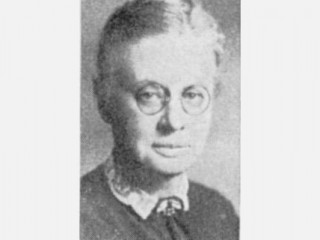
Gail Laughlin biography
Date of birth : 1868-05-07
Date of death : 1952-03-13
Birthplace : Robbinston, Maine
Nationality : American
Category : Famous Figures
Last modified : 2010-11-04
Credited as : Lawyer and state legislator, suffragist, feminist
3 votes so far
Childhood
Originally christened as Abbie Hill, Gail Laughlin’s early life and childhood is as inspiring as her crusade for the rights and autonomies of women. Born in Robbinston, Maine, Gail vowed at an early age of twelve to commit her life to the cause of women’s emancipation. Today, her life stands as an unflinching account of her tenacious efforts to elevate women’s status in male-dominated society. Born as the eighth of nine children, Gail Laughlin’s childhood was far from anything momentous. Born to an Irish father Robert C. Laughlin, an ironworker, and Canadian mother Elizabeth P. Laughlin, Gail lost her father when she was very young. The sudden loss rendered Laughlin’s family broke and it was only when they shifted to Portland that their fortunes ameliorated.
Education
Gail Laughlin was a gifted child with amazing aptitude and unusual acuity. She graduated from Portland High School in the year 1886 and was honored with the Brown Medal for securing the highest grades in her class. She spent the next four years serving a China importer as an accountant and saved enough money to fund her further education. She enrolled into Wellesley College and during the very first year of her term found the Agora Society for the study of civics and politics. During the final year of her graduation term, Gail Laughlin gave a speech on tariffs that won the interest of the Home Market Club of Boston. She received her B.A. in 1894 from Wellesley and joined American Economist as a writer. She earned enough money to furnish her ambition and in the year 1898, she graduated as an L.L.B from Cornell University. She cleared the New York Bar exam in the following year and established her first office in the New York City in 1899.
Career
In the year 1900, Laughlin was appointed as a specialist agent for the United States Industrial Commission. Her two years of research on the plight of black, rural and immigrant women employees and their petite pay scale inspired her to relinquish her law practice and take up their cause. From 1902 to 1906, she functioned on behalf of the National American Woman Suffrage Association, lecturing, organizing, and inspiring women to demand their rightful dignity. After the enfranchisement of Colorado women in 1906, Gail Laughlin returned to Denver to continue with her law practice. She served the State Board of Pardons, Mayor’s Advisory Council and State Executive Committee for the Progressive Party. All these years of work and experience exposed her to the injustice meted out by all-male juries and she decided to challenge the injustice. In 1914, Laughlin moved to San Francisco and there she spent the next ten years of her life serving the Republican State Central Committee, as an adjudicator in police courts, and even established the state branch of the National League for Women's Services. She then joined the National Women's Party. She also passed a law allowing women to serve as juries in the state of California.
Later Life
In 1919, Gail Laughlin founded the National Federation of Business and Professional Women in St. Louis and served as the national president of the federation. In the year 1924, she returned to Portland and started her new office with her younger brother. In 1927, Laughlin led a 200-car motorcade to visit President Calvin Coolidge in South Dakota and requested him to pass the Equal Rights Amendment (ERA) during the next congress session. This earned her national publicity and she went on to become a member of the state legislature in 1929. In 1935, she joined the State Senate and served her senatorial term till 1941. She also became the first women recorder of Supreme Court decisions.
Death
Gail Laughlin was a golfer and an angler and served actively as a member of many boards, bar associations and committees till a minor stroke in the year 1948 compelled her into semi retirement. Gail Laughlin died four years later in her Portland home.
Timeline
1868: Gail Laughlin was born in Robbinston, Maine, on May 7
1886: Completes schooling
1894: Receives her B.A. from Wellesley College.
1898: Graduated as an L.L.B from Cornell University.
1899: Cleared New York Bar examination
1900: Appointed as a special agent of United States Industrial Commission
1902: Campaigns for National American Women Suffrage Association
1906: Resumes law practice in Denver
1914: Moved to San Francisco
1919: Founded the National Federation of Business and Professional Women in St. Louis and served as the national president of the federation.
1924: Returns to Portland and starts and her new office
1927: Led a 200-car motorcade to South Dakota to visit President Calvin Coolidge about the Equal Rights Amendment (ERA)
1929: Becomes a member of State Legislature
1935: Joins State Senate
1941: Her senatorial term comes to an end
1945: Served as the first recorder of Supreme Court
1948: Suffers minor stroke
1952: Gail Laughlin died, on March 13 .
















